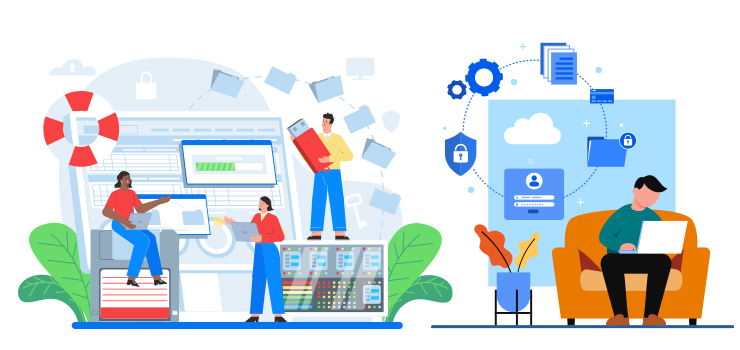
Component-based programming requires software dependencies in order for the ecosystem to operate without interruption. However, agile developers may find it challenging to deploy, upgrade, and migrate software systems. Modern businesses need technology stacks that can handle more complex applications in order to keep their workforce productive.
Additionally, firms that try to stay up with new technology end up with layers of connected hardware, software, and systems that are more and more reliant on one another. Mission-critical technology frequently needs connections, services, and infrastructure parts to work. The issue is made worse by the fact that each of these programs has its own unique set of transitive dependencies.
The process of identifying dependencies and interactions between application components, the infrastructure that supports them, and their dependents are known as application dependency mapping. Making a map of how apps interact with one another is an essential step in comprehending how complicated application architectures work and what happens when they are deployed in various circumstances.
Application dependency mapping makes sure that all essential elements for cloud migration have been found. Even though moving all components to the cloud might not be necessary, you must make sure that all dependent components are identified and moved at the same time.
If you don't, crucial dependencies will stay locally, which can have an impact on how well your application runs. Businesses can comprehend the effects of even minor app changes thanks to app dependency mapping.
For instance, if you relocate an application server to the cloud but keep the database on-premises, your application can operate much more slowly or possibly stop working altogether. All dependent apps have problems when a dependence fails. As a result, you must incorporate everything users require when transferring apps to the cloud.
Furthermore, because it assures the proper order of component transfer, application dependency mapping is essential for successfully modernizing a data platform. Business priorities will also be considered in this sequencing.
An in-depth comprehension of the data's origin and flow is necessary to ensure compatibility with data regulations and compliance procedures (i.e., upstream to downstream application flow).
Application dependency mapping improves project planning and execution while saving IT teams time and money. As a result, organizations as a whole experience less downtime and malfunctioning apps and services. Depending on how you automate discovery and mapping, you might not be able to see your complete IT ecosystem.
Some older systems were created to function in a specific setting or with a particular management platform. All you need to do is determine the ideal method for your tech stack to benefit from these.
To provide a view of the application supply chain, any important data, code objects, tables, and more can be tagged or organized into moving groups. It can be used to map applications hosted in virtualized, hyper-converged, and multi-cloud environments where tagging is common since it is simpler to install and configure than other approaches. It is vital to have detailed knowledge of the provenance of the data in order to ensure proper tagging.
Eagle is well-suited to identify the lineage of an application, task, code, table, file, or view as a migration planning tool. App dependencies are automatically created based on the Eagle lineage information.
Due to its time and money savings capabilities, Eagle is perfect for both large and small businesses. It makes it simple to map dependencies and guarantees that your map is accurate even as your infrastructure changes.
Although mapping application dependencies is a time-consuming and costly operation, you have a variety of solutions to take into account. Sadupsoft, a reputable cloud migration partner, gives the choice to use an automated solution that can handle the majority of the work for you so that you can start along the path to observability and enjoy its advantages. Call us right away to find out more.